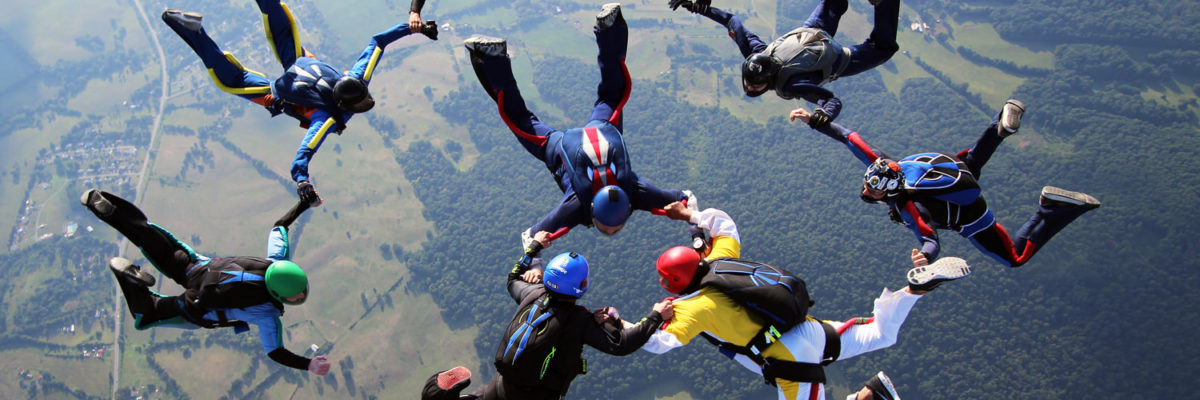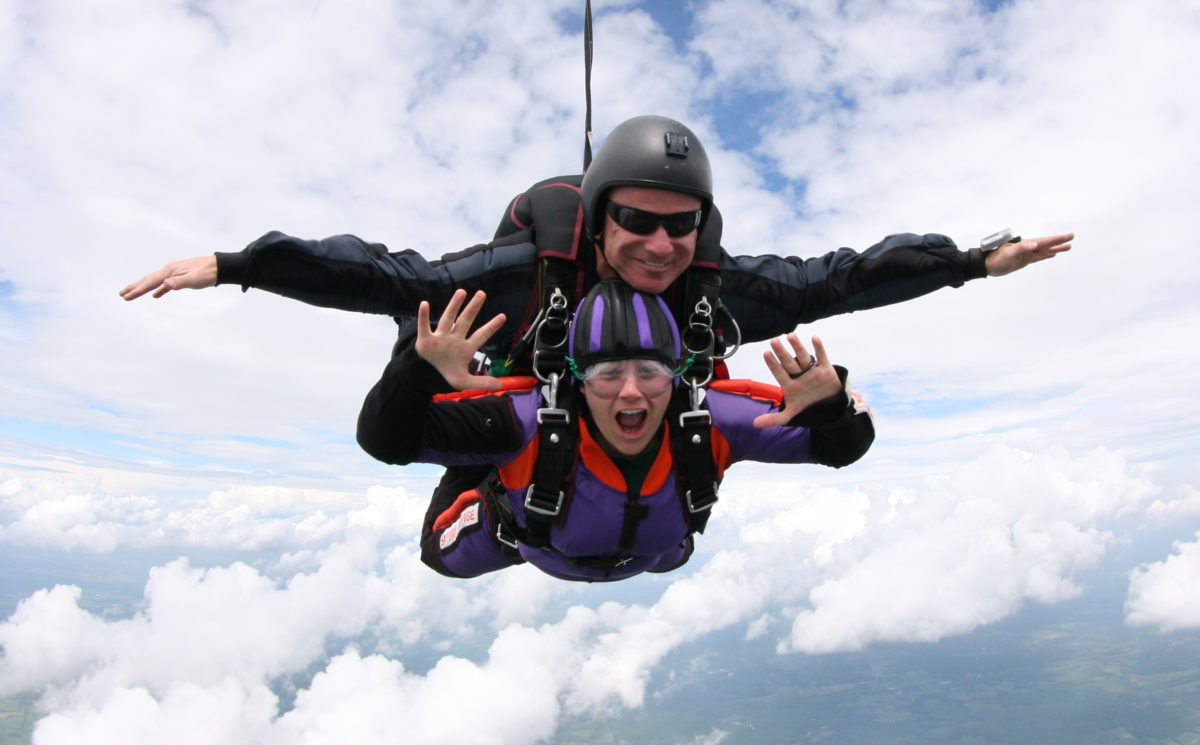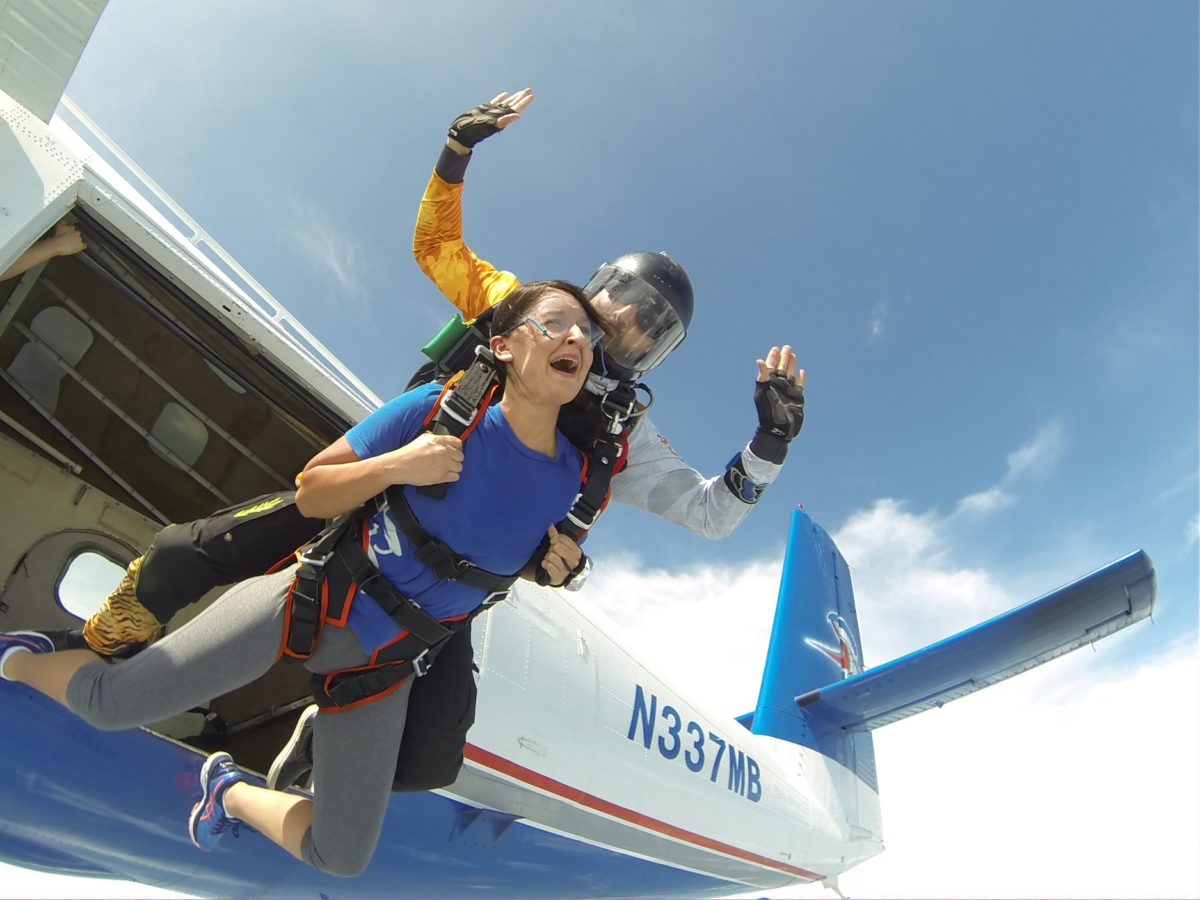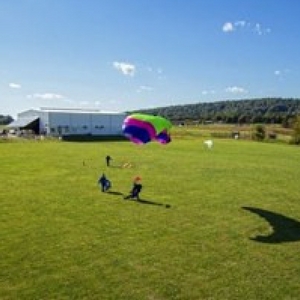
5 Tips for Overcoming Your Fear of Heights
Wednesday, September 23, 2020
- Skydive Orange
- 9/23/20
- 0
- General
You are never too old to face your fears and make a change. Maybe figuring out how to get over your fear of heights is first up on your to-do list of personal development or maybe you are using overcoming a fear of heights to round out an era of self-improvement. Whichever the case, it is possible to tackle that knee-knocking, gut-wrenching feeling of acrophobia.
Overcome Your Fear : Know Your Fear
Acrophobia, or the fear of heights, is currently tucked under the label of natural environment phobias and fears, along with aquaphobia, a fear of water, and nyctophobia, a fear of the dark. For whatever reason, as our ancestors developed so, too, did certain phobias and fears of the natural world. It was for good reason. Without the capacity for fear, our ancestors would have set out with reckless abandon into the night right into the jaws of any number of nocturnal threats.
That being said, those of you reading this article, probably no longer rely on a hunter-gatherer way of life or experience the evolutionary threats of our ancestors. This means your fears aren’t keeping you safe from a potential hidden predator lurking in the grass, they are just holding you back. Want to move past it and overcome your fear? Keep reading for 5 tips to get over a fear of heights.
1. Understand Where The Fear Comes From
Knowledge is power and understanding the origins of a fear of heights can help you to look at your fear with a more objective gaze. With the help of a bit of objectivity, it is much easier to examine the rationality of a fear. All in all, as we discussed above, the capacity for fear is downright primal. In and of itself, fear isn’t a bad thing.
However, upon entering the modern age, mankind has certainly found that they need not always heed the confines of the natural world. Take, for example, locomotion: humans don’t possess naturally formed wings, but we designed a way to fly. Nor were we built to swim long distances or traverse open oceans, but we neatly solved that too. The point is it is time you acknowledge the only limitation to overcoming fear is in your mind.
2. Do A Little Research: The Results May Surprise You
It has been long held that a fear of heights was an innate fear. The problem with such an assumption is that it almost forgoes resolution. Delving a bit more into the fear of heights yields some interesting results.
You may be shocked to know that it would appear a fear of heights may not truly be an “innate” fear.
Because of experiments conducted in the 1960’s by Gibson and Walk whereby infants would attempt to traverse a solid glass board but given the appearance of a “visual cliff” from beneath by a piece of material pressed flush against the glass on one side and upon the floor on the other side, it was deduced that the infant’s hesitance to cross the “visual cliff” meant that infants learned to be afraid of heights as they learned to crawl.
Research from Karen Adolph of New York University’s Infant Action Lab seems to suggest otherwise. The research she’s gathered upsets the findings from that 1960’s experiment. It would seem that it is not a fear of heights that prevents children from crossing the “visual cliff”, but rather, as infants learn to crawl, toddle, and eventually walk, they are becoming more aware of what is within their limits and what is not. The infants don’t fear the distance or fear the height, they are adaptively perceiving the utility of the movement i.e. if the environmental cues indicate an inability to cross, why even try!
This means your fear of heights may not be as innate as you think. If the fear isn’t hardwired into your being, then it would stand to reason, there’s a way around it!
3. Visualize Success
We’ll tell you time and time again, the mind is a powerful thing. Before confronting your fear with a tandem skydive, use that marvelous mind of yours to envision each detail. Consider the safety precautions that have been taken. Feel the security of the harness. And finally, when you do decide to overcome your fear, remember that throughout this experience as you challenge heights with a tandem skydive, you are physically attached to a licensed skydiving professional. S/he will be right there each step of the way.
4. Breathe
When experiencing the stirrings of fear, many people hold their breath. As easy as it may be to slip up, don’t forget to breathe. Your body needs a good steady flow of oxygen to keep you feeling calm, cool, and collected. Hone in on the feeling as you fill your lungs with nice long inhales and as you expel your fear with the exhales.
5. Cut Yourself Some Slack
Figuring out how to get over acrophobia doesn’t just happen overnight. You may not be ready to go from a full-blown case of acrophobia to making a tandem skydive just like that. Work on facing the challenge in small increments.
When you’re ready, reach out to us. We’d love to help you leap into a new adventure and face your fears with tandem skydiving.
Citation:
Adolph, Karen E et al. “Fear of heights in infants?.” Current directions in psychological science vol. 23,1 (2014): 60-66. doi:10.1177/0963721413498895
The largest tandem skydiving center near Northern Virginia, Washington D.C. and Maryland.
Copyright © 2025, Skydive Orange, All Rights Reserved.
DropZone Web Design & Marketing by Beyond Marketing, LLC




